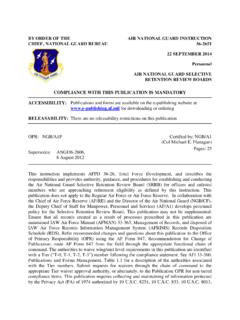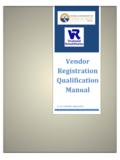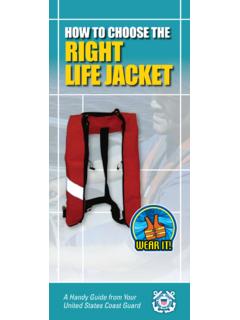Transcription of MasterGuard
1 MasterGuard (COVER ART) PHOTOGRAPH OF ALARM Heat Activated Fire Alarm Model QR-50 Owner s manual MasterGuard , 801 HAMMOND STREET, SUITE #200 COPPELL, TX 75019 PHONE (972) 393-1700 FAX (972) 393-1701 Welcome to the growing circle of MasterGuard protected families. You will be thankful for your wise investment in MasterGuard each time you read about a residential fire. If you should have any questions or comments concerning your MasterGuard products, feel free to contact your Independent Authorized Dealership. _____ Independent Authorized Dealership _____ Address City State/Prov. Zip/PC _____ Telephone Number _____ Sales Representative _____ Address City State/Prov.
2 Zip/PC _____ Telephone Number NOTICE: Be sure the installer tests each alarm in your presence and instructs you on the operation and maintenance of the device. NOTICE: Properly functioning smoke alarms give earlier warning than Heat Alarms in nearly all residential fires. This is because detectable levels of smoke almost always develop before detectable levels of heat. The MasterGuard QR-50 Heat Alarm has been tested and listed by Underwriter s Laboratories, Inc [Listing No. S2117] 2 QR-50 HEAT ACTIVATED FIRE ALARM Thank you for purchasing the QR-50 Heat Alarm by MasterGuard . The Heat Alarm plays an important role in protecting your family and home from the dangers of fire. Please carefully read and follow the information in this booklet to ensure that your alarm will operate properly and is located in the areas best suited for heat activation.
3 Table of Contents 1. Heat Alarm Features Pg 3 2. Proper Placement of Heat Alarms Pg 3 3. Additional Placement Information Pg 4, 5 4. How to Power and Fuse the Heat Alarm Pg 6 5. How to Mount the Heat Alarm Pg 6 6. Testing and Maintaining Your Heat Alarm Pg 7 7. Troubleshooting Your Heat Alarm Pg 7 8. Heat Alarm Limitations Pg 7 9. Important Fire Safety Information Pg 7, 8 10. Home Fire Safety Checklist Pg 9 11. Fire Replacement & Warranty Information Pg 10, 11 1. Heat Alarm Features Activated by heat, not smoke.
4 117 , 136 and 175 sensors are available. See underside of sensor for printed temperature value. Mechanically powered and requires no batteries or electrical hookup. All metal construction to ensure extreme reliability and long life. No maintenance required. Generates an extremely loud, unique mechanical ringing when activated by heat. Not affected by dust, insects or the byproducts of cooking. This makes the Heat Alarm ideal for household locations not typically suitable for a traditional smoke alarm. Space rating of 50 feet. Alarm audibility and functionality can be tested by simply removing the Heat Sensor. 2. Proper Placement of the Heat Alarm The QR-50 Heat Alarm adds an extra level of fire protection to most household settings. Although the primary form of fire warning is properly located and maintained smoke alarms, complete fire protection can be achieved from a combination of heat and smoke alarms properly installed throughout the home.
5 The QR-50 is for indoor, residential use only. MasterGuard recommends the following locations for Heat Alarm installations in the home: Kitchen. Most household fires originate in the kitchen. The QR-50 is ideal for the kitchen since it is not activated by the byproducts of cooking, smoke or cooking scents. Recommended Heat Sensor rating = 117 . Attic. The QR-50 is not affected by dust, small insects or seasonal changes in temperature. Its no maintenance requirement will ensure that the alarm will still be functional for many years. Recommended Heat Sensor rating = 175 Utility and Furnace Rooms. The low volume steam and gases produced by mechanical equipment will not activate the QR-50. Recommended Heat Sensor rating = 136 Attached Garages. Exhaust gases from vehicles will not trigger the Heat Alarm.
6 Recommended Heat Sensor rating = 136 Note: As with any alarm, test activate the alarm to determine that the sound volume is sufficiently loud in all sleeping areas to wake the room s occupants. 3 3. Additional Placement Information MasterGuard recommends complete home fire protection, achieved by installing a combination of Smoke and Heat Alarms in their appropriate locations throughout the house. Do not install Heat Alarms in bedrooms without accompanying Smoke Alarms. Heat from a fire rises to the ceiling, spreads out across the ceiling surface and begins to bank down from the ceiling. The corner where the ceiling and the wall meet is an air space into which heat has difficulty penetrating. This is dead air space! Alarms must not be placed in the dead air space. (See drawing below) Install the Heat Alarm on the ceiling, as close to the center of the room as possible.
7 If this is not practical, mount the alarm no closer than 4 inches from a wall or corner. If possible the alarm should be moved in the direction of potential fire sources. Do not install on ceilings that have radiant heating. (See drawing below) If mounting on the ceiling is not an option, and if local codes allow wall mounting, install the Heat Alarm on the wall no closer than 4 inches but no more than 12 inches from a ceiling/wall intersection. (See drawing below) Install Heat Alarms on peaked, cathedral, or gabled ceilings within 3 feet from the highest point (measured horizontally). DO NOT install Heat Alarms within 3 feet of heating and cooling supply vents. DO NOT install alarms behind drapes, doors or other objects that will impede airflow. Heat Alarms shall be installed within the strict limitation of their listed spacing in rooms with smooth, level ceilings.
8 The QR50 has a Space Rating of 50 feet. The maximum installed spacing shall be 50 percent of the listed spacing in the uphill direction from a detector in a room with a ceiling slope greater than one-foot rise per 8 feet horizontally. On level ceilings with open joists or beams, all alarms shall be mounted on the bottom of such joists or beams. (See drawing below) Reduced spacing may be required due to structural characteristics of the protected area, possible drafts, or other conditions affecting detector operation. Alarms installed on a joisted ceiling shall have their smooth ceiling spacing reduced where this spacing is measured at right angles to solid joists; in the case of Heat Alarms, this spacing shall not exceed one-half of the listed spacing. Additional Placements Guides: AVOID DEAD AIR SPACES WALLDEAD AIR SPACE DO NOT USE OF ALARMACCEPTABLE INTHIS AREA4 DO NOT INSTALL INBETWEEN JOISTSOR RAFTERS ALARM PLACEMENT CEILING OPEN JOISTS, BEAMS OR RAFTERS DO NOT USE 4 KEYNFPA MINIMUM REQUIRED Smoke Alarm location Note: Additional Alarms should be added for complete protection BEDROOMUTILITY ROOMLIVINGROOMBASEMENT UNFINISHEDATTICKITCHENBEDROOMHALL Recommended Heat Alarm location Existing Homes: 5 KITCHEN BEDROOM BEDROOM BEDROOM DINING ROOM LIVING ROOM ONESTORYHOME TWO STORY HOME UTILITY ROOMBASEMENT UNFINISHEDATTICKITCHENLIVINGROOMBEDROOMB EDROOMHALL New Construction.
9 KITCHEN BEDROOM BEDROOM BEDROOM DINING ROOM LIVING ROOM ONESTORYHOMEKEYNFPA MINIMUM REQUIRED Smoke Alarm location Recommended Heat Alarm location Electrical interconnection Note: Additional Alarms should be added for complete protection TWO STORY HOME This equipment should be installed in accordance with the National Fire Protection Association s Standard 72 (National Fire Protection Association, Batterymarch Park, Quincy, MA 02269). For your information, the National Fire Protection Association s Standard 72, Section covering required protection in One- and Two-Family Dwelling Units, reads as follows: Smoke Detection. Where required by applicable laws, codes, or standards for the specified occupancy, approved single- and multiple-station smoke alarms shall be installed as follows: (1) In all sleeping rooms Exception: Smoke alarms shall not be required in sleeping rooms in existing one- and two-family dwelling units.
10 (2) Outside each separate sleeping area, in the immediate vicinity of the sleeping rooms (3) On each level of the dwelling unit, including basements Exception: In existing one- and two-family dwelling units, approved smoke alarms powered by batteries shall be permitted. Heat Detection. General. While Chapter 11 does not require heat detectors as part of the basic protection scheme, it is recommended that the householder consider the use of additional heat detectors for the same reasons presented under The additional areas lending themselves to protection with heat detectors are the kitchen, dining room, attic, (finished or unfinished), furnace room, utility room, basement, and integral or attached garage. For bedrooms, the installation of a smoke detector is recommended over the installation of a heat detector for protection of the occupants from fires in their bedrooms.




